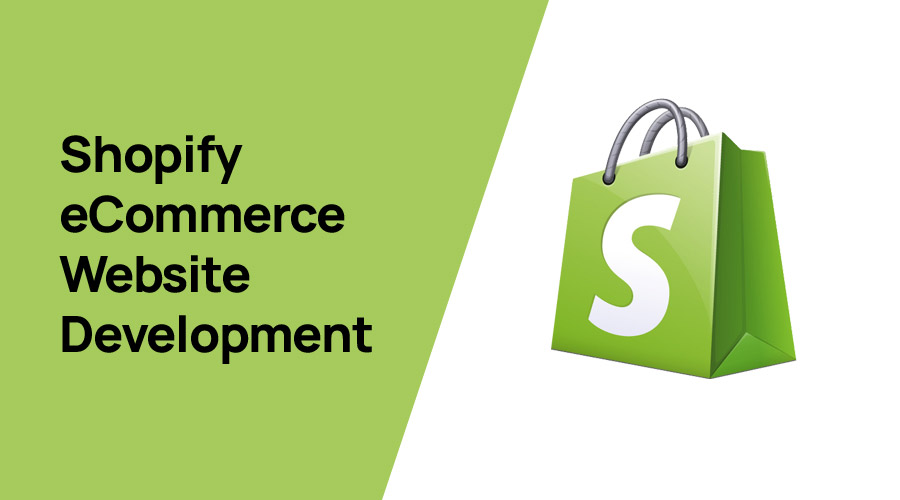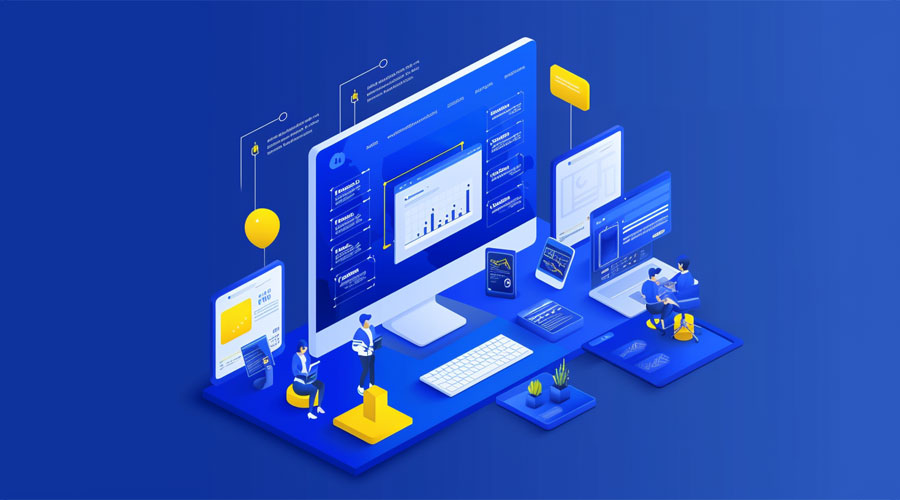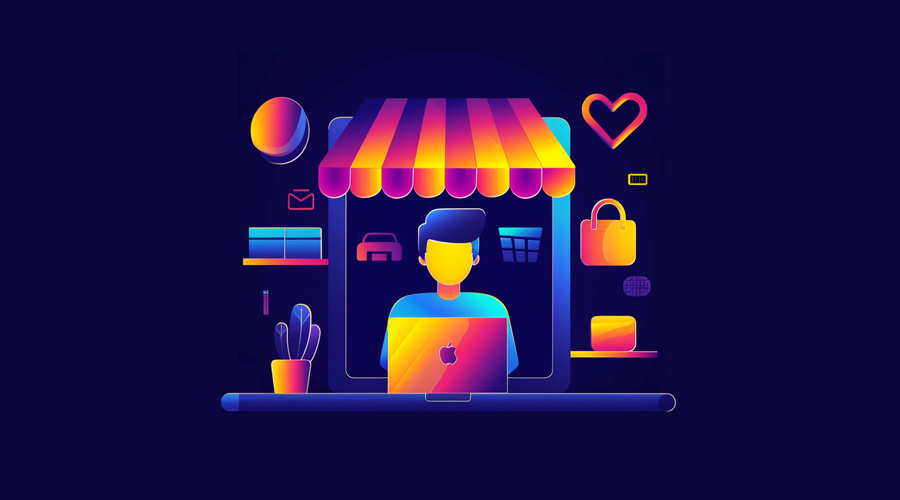All About Shopify eCommerce Website Development

Shopify’s support can help anyone turn a concept for a business into a successful online store. This guidance for beginners includes everything you need to set up and personalize the appearance of your shop. Whatever degree of business experience you have, Shopify provides everything you need to build and profit from your ideal online store.
Step 1: Understanding Shopify

What is Shopify?
An online eCommerce platform called Shopify makes the process of opening and running an online store easier. It provides advanced functionality, a considerable software marketplace, and a simple interface that adjusts to different organisational requirements. Shopify provides a flexible online sales management system that adapts to users’ business experience, even extending its functionality through custom Shopify App Development for advanced needs.
Key Benefits of Shopify
- Simplicity of Use: Shopify’s easy interface allows anyone to set up and operate a store without any previous coding skills.
- Scalability: Shopify scales effortlessly to deal with increased product volumes, traffic, and sales as your business grows.
- Security: Shopify prioritises security, offering strong built-in capabilities and following industry standards to protect your client’s personal information and financial activities.
- App Marketplace: The big app store provides access to thousands of third-party applications that improve the functionality of your store. You may personalize the Shopify environment by adding shipping alternatives, marketing tools, payment methods, and other features.
Step 2: Getting Started with Shopify
Signing Up and Free Trial:
Visit Shopify’s website to start a free trial. This allows you to try and learn about the platform’s capabilities before purchasing an extra subscription. You will select a store name throughout the registration process, which will act as your online brand identification.
Choosing a Pricing Plan:
Shopify provides several kinds of subscription levels to meet the demands and sizes of businesses. While higher levels like Shopify and Shopify Plus offer additional capabilities for larger businesses with huge sales volumes, the Basic Shopify plan is a wonderful place for novices to start.
Setting Up Your Store:
Following your selection of a plan, a setup procedure will be walked through. This includes providing the package selections, payment details, and business details. This is where you will begin personalising your store’s look and environment.
Step 3: Designing Your Shopify Store
Choosing a Theme:
Shopify offers a selection of given and free themes that allow you to customize the design in general of your business. Consider topics that complement your target audience and brand image.
Theme Customisation:
Many themes offer extensive customisation options. You may offer your store a distinct visual identity by customizing the colours, fonts, layouts, and banner images. While some technical knowledge is required for extensive customizations, Shopify’s theme editor allows user-friendly adjustments without the need to write code.
Product Listing and Management:
This is the center of your store! You can get great pictures, detailed product descriptions, and reasonable prices here. You can manage inventory, track sales performance, and classify products with Shopify.
Integration With Payment Gateways:
Popular payment options like PayPal, Stripe, and others are simply incorporated with Shopify. Customers can now safely make purchases using their preferred payment options.
Shipping Configuration:
Define your delivery guidelines, pricing, and shipping zones. Shipping options include weight-based, flat-rate, and free shipping over a predetermined buy value. To speed up the fulfillment process, integrate with shipping companies.
Step 4: Optimizing Your Shopify Store
Search Engine Optimization (SEO):
Increase the search engine rating of your store by implementing SEO-recommended strategies. Make use of pertinent keywords in the meta tags, descriptions, and titles of your products. For additional optimization, make use of Shopify’s integrated SEO tools and think about installing SEO applications.
Content Marketing:
Provide useful data, like product manuals, blog articles, or explainer films, to draw in organic visitors and position yourself as an industry expert. Make use of social media channels to market your material and increase online store traffic.
Mobile Responsiveness:
Be sure that your store works properly and looks fantastic on all kinds of devices, particularly smartphones. While Shopify Theme Development is usually responsive on mobile devices, you should always check again to provide the best possible experience on all screen sizes.
Step 5: Launching and Managing Your Store
Test Before Launch:
Before going live, verify that you have tested every feature of your store thoroughly. Make sure the checkout procedure is easy to use, check the accuracy of the product information, and make sure shipping and payment are processed properly.
Marketing and Promotion:
Use marketing techniques to connect with your target market once your store launches. The use of emails, social media marketing, and paid advertising are a variety of methods to grow your customers and income. Shopify API Integration, marketing tools, and other marketing platforms simplify campaign maintenance.
Step 6: Advanced Considerations for Experts
Theme Development:
For more experienced users or those with particular design needs, Shopify offers advanced theme modification and customized theme creation. This gives you total control over how the store appears and operates, but it does require some coding knowledge.
App Integrations:
There are many external programmes available in the Shopify App Development Company marketplace that may improve the functionality of your store. Check out apps for email marketing automation, abandoned cart recovery, user feedback, loyalty programs, and more.
Data Analytics and Reporting:
Shopify provides comprehensive analytics dashboards to track the operation of your store. Analyse Analyze important data, including conversion rates, traffic sources, client profiles, and sales trends. These insights help you make informed choices that optimize the performance of your store’s marketing efforts.
Wholesale and Dropshipping:
Shopify supports a range of business models. You have the option of running a conventional inventory-based store or investigating drop shipping, in which you collaborate with a supplier to send goods straight to consumers. There are apps available that make dropshipping on Shopify more efficient.
Step 7: Beyond the Basics: Growing Your Shopify Business
Scaling Your Business:
Shopify grows with your business, scaling with simplicity. To gain access to features that allow for greater traffic and sales volumes, upgrade your package. To handle expanding operations, think about contracting more people or looking into outsourcing options.
Building a Brand:
Developing a strong brand identity starts with your Shopify store. Create a unified brand voice, make use of outstanding imagery, and provide outstanding customer support to build client loyalty and trust.
Building a Community:
Connect with your customers on social media, respond to reviews, and actively participate in key industry forums. Building a community promotes brand loyalty and attracts new customers via successful referral marketing.
Staying Updated:
The eCommerce market is always changing. Stay current on the latest trends, security best practices, and new Shopify features. Attend webinars, read industry blogs, and make use of Shopify’s training initiatives to stay ahead of the trend.
You can create a successful Shopify Store Development that survives in the changing online marketplace by following these steps and constantly refining your strategy. Remember that while Shopify allows you to create an engaging online business, your passion, creativity, and strategic planning are all required to realize every opportunity and secure long-term success.
Conclusion
Shopify allows businesses of all sizes to develop successful online stores. This guide covers everything from launching your business to growth methods. Continue to explore Shopify’s features, experiment with marketing, and adapt to remain ahead of the ever-changing eCommerce market.




